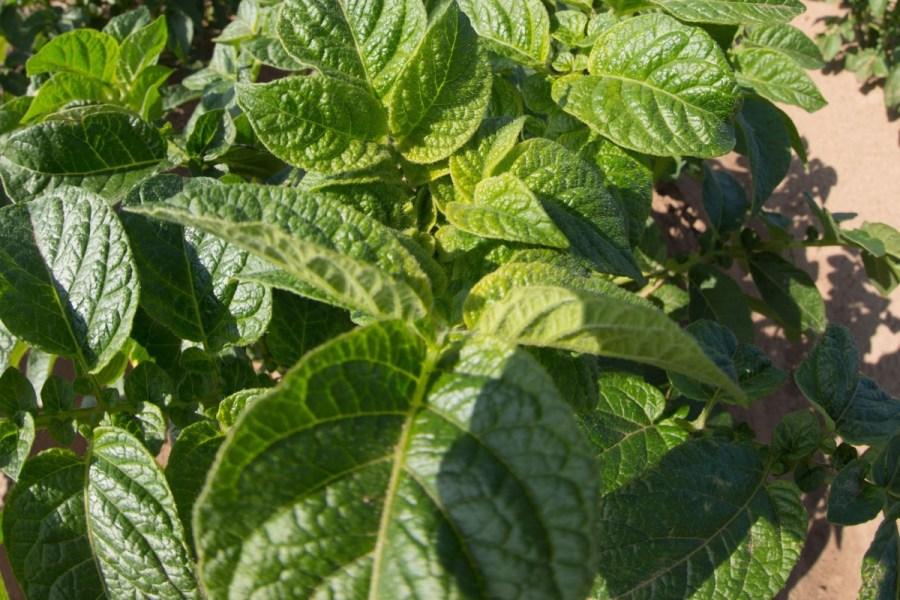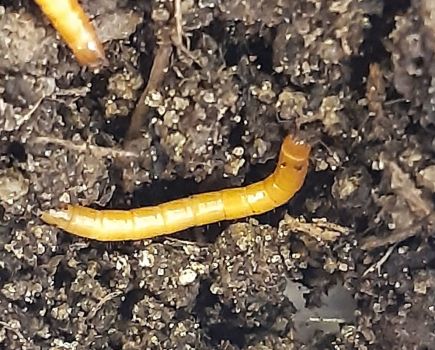The changing weather patterns being experienced in the UK puts potato crops at risk from temperature stress, according to a recent survey carried out by Syngenta. CPM finds out more.
Growers most frequently cited the effects of heat in limiting tuber bulking.
By Lucy de la Pasture
New market research has been questioning how potato growers perceive the role of biostimulants in crop agronomy.
The survey involved 60 potato growers and specialist agronomists across England and Scotland, including 10 farmers growing over 100ha of potatoes and advisors covering a total of 25,666ha. Among growers 70% of the crop was grown under contract, including 52% of total area for pre-pack, 32% for crisps or chipping and 7% for seed.
Of all the stresses, heat stress was perceived as one of the biggest threats, scoring 74 out of 100, compared with drought stress at 71, nutrient deficiency at 64 and intensive light at 57.
Digging a little deeper, the results show that 37% of the farmers questioned ranked heat stress as very high impact (nine or 10 on a scale of 0-10), with a total of 70% scoring it as seven or higher. Just 13% perceived the effect on their crops to be a score of four or below.
While drought clearly has potentially larger impact on yield – and was seen to be causing increasingly greater issues with extremes of weather – the majority of ware crops were irrigated to mitigate and manage its effects.
However, coping with heat stress was now recognised as a more difficult challenge, according to Andy Cunningham, Syngenta biostimulants technical manager. “Growers most frequently cited the effects of heat in limiting tuber bulking, leading to lower yields and more variable tuber size. The resulting uneven growth and associated cracking, impacting on tuber quality, was also highlighted.”
Growers and agronomists agreed temperatures of 24-25⁰C would result in heat stress during the growing season, but even at temperatures above 20⁰C many believed that tuber bulking would be slowed. In addition, it was suggested that during periods of heat stress plants would be less effective at taking up irrigation water and there was a risk of triggering further stress when applying cold water onto heat stressed potatoes.
“Both growers and agronomists highlighted there are varietal differences in tolerance and response to heat stress but there is no comparative reference information, so they rely on personal experience on their farms,” says Andy.
The research highlighted that while 40% of potato growers currently see biostimulants as highly important to their crops’ agronomy (ranked seven or more), 80% believe they will become so in the next five years. Some 23% of the growers questioned don’t see biostimulants as important now, but only 3% think that will be the case in five years.
The response from specialist potato agronomists and advisors gave a slightly different perspective, with around 19% currently seeing biostimulants of high importance and 60% believe that they will be within five years.
Most growers and advisors see the key role of biostimulants as helping to manage the effects of drought and high temperatures (72% & 35%). Other benefits sought include effects on nutrient deficiency, blight infection and nematode induced stress.
“The market data has indicated growers and agronomists are looking for more detailed technical information on how and why Quantis works to help potato plants better cope with the effects of stress. We now have results of independent research by University of Nottingham that pinpoints what’s happening in the plant and the benefits these effects can have,” adds Andy.
Potato Partnership to build on legacy
Farm advisers and trials specialist Agrii is to lead a collaborative project intent on building on the legacy of AHDB Potatoes. In collaboration with Foskett Farms, East Suffolk Produce, Matt Gregory of Greenwell Farms and independent agronomist Graham Tomalin, the ‘Potato Partnership’ will investigate solutions to some of the most pressing production challenges facing growers.
Nick Winmill, Agrii head of potato technical and development and project lead, said the intention was to expand on the work of AHDB Potatoes and maintain the provision of quality information to growers and industry.
“We have to find solutions to some considerable pest and disease threats. How we manage populations of potato cyst nematode and wireworm against a backdrop of reducing product choice will be foremost in our minds.
“We also require a suitable successor to metribuzin for broad spectrum weed control and actions for the integrated control of aphid borne viruses. It will take time to develop strategies that consider the challenges facing us, so it is imperative that this work begins sooner rather than later,” says Nick.
The project will utilise the potato crop area on the partner farms but will also involve neighbouring land to maximise the value of the data generated.
“The intention is to identify solutions that can be deployed in the current season, but there is also a longer-term focus to much of the activities, namely the rotational control of soil pests. To ensure the continued generation of quality data, we will work with other interested growers,” he says.
The involved parties plan to share the learnings with others through a series of field events beginning in July and August this year followed by a summary briefing during the winter.
“There is no time limit to our commitment, and we have a schedule of research activities that takes us up to 2028. With the right partners and interest from growers, we hope to continue beyond this period,” adds Nick.




